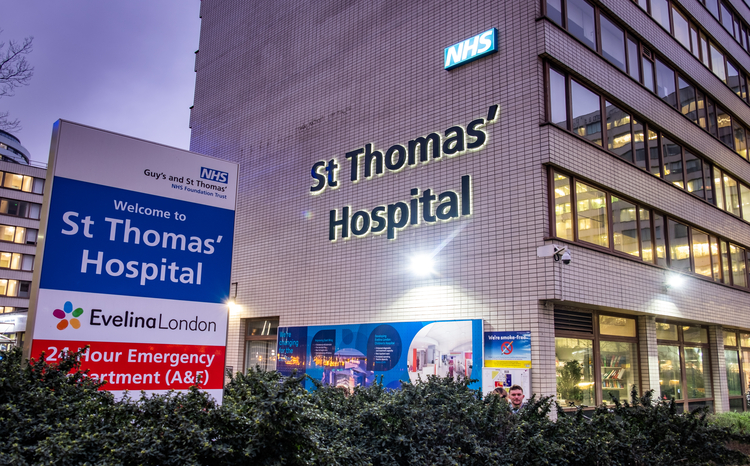Report challenges hospital mobile ban
- 25 May 2004
A new report on electromagnetic compatibility (EMC) and electromagnetic interference (EMI) in healthcare facilities challenges the wisdom of blanket prohibitions on mobile phones and other wireless devices in hospitals, writes Neil Versel from the annual Toward an Electronic Patient Record (TEPR) conference in Fort Lauderdale, Florida. According to a white paper issued by the US-based Mobile Healthcare Alliance (MoHCA), a properly designed policy on wireless technology can help healthcare facilities prevent medical errors, save money and improve patient and clinician satisfaction. "With simple procedures, effective management and clear communications, a healthcare institution’s well co-ordinated EMC programme can help to improve cost-effectiveness and provide patients with state-of-the-art healthcare that includes the safe co-existence of medical devices with wireless mobile technology," the paper says. MoHCA recommended against general bans on mobile phones and other wireless devices, suggesting that hospitals should examine the wisdom of controlling radio signals only in critical areas such as emergency departments and intensive care units. The group instead urged healthcare providers to develop intelligent policies on wireless technology. "The key is to optimise EMC by minimizing emissions while maximizing the immunity to EMI," the report said. “One should not have a total ban on anything,” according to C. Peter Waegemann, vice-chair of MoHCA and chief executive of the Medical Records Institute, the organisation that produces TEPR. "Have a policy," he said. MoHCA member Dara McLain, an engineer with medical device manufacturer Philips Medical Systems, added: "The benefits of an EMC programme can potentially save lots and lots of money." The central topic of the TEPR conference was the recent adoption of two key standards for clinical IT and the creation of a national health information technology policy office within the US Department of Health and Human Services. Dr David Brailer, who becomes the United States’ first national health IT co-ordinator this week, chose TEPR as the venue for his first major public speech since his appointment because the conference attracted leading medical informaticists from the US and abroad. “I consider you to be the core audience that’s going to make the things that you want to do happen,” Brailer said during a keynote address. “I want to move very, very quickly to take advantage of some very exciting opportunities over the next couple of years,” Brailer said. "I need your help." Brailer also gave an optimistic prognosis for the adoption of healthcare IT. "The question is no longer: ‘Is it going to happen?’ The question is now: ‘Will it happen now or will it happen later?’" Brailer said. US President George W. Bush has given Brailer until late July to devise a strategic programme for a nationwide, interoperable health IT infrastructure. During his Fort Lauderdale speech last Wednesday, Brailer said that his plan likely will call for industry-wide co-operation in a series of regional and national connectivity projects rather than a government mandate to adopt electronic health records. Brailer also praised the health IT industry for its quick work in developing a consensus standard for what is being called the Continuity of Care Record (CCR), a minimum dataset for ensuring safety when patients move between care settings. This will be in XML format for compatibility with virtually any computer that has a Web browser. Standards-setting organisation ASTM International certified a CCR standard last month, less than a year after it was proposed, and more than two dozen vendors participated in a CCR demonstration at TEPR. Two companies that produce "personal" health records, MedKey Corp. and CapMed Corp., distributed USB drives containing mock patient data to all 6,000 attendees to show how competing clinical IT systems can read and update encrypted records in the CCR format. "Our goal is to be ‘hardware-agnostic’," explained Wendy Angst, general manager of CapMed. Meanwhile, another standards group, Health Level Seven (HL7), is close to certifying a trial standard for an electronic health record that the government-run Medicare programme for the elderly and disabled has pledged to adopt. As Medicare is the largest single health payer in the United States, private health insurers often set their own reimbursement schedules based on government policy. HL7 is in the midst of reconciling more than 1,000 comments it received during a recently concluded round of balloting on an EHR standard that was greatly simplified from an earlier, defeated proposal. “When we do the final tally, we expect a 90 per cent affirmative vote,” HL7 EHR technical committee co-chair Gary Dickinson said last week. "Expect a draft standard for trial use by June." All this positive momentum is tempered, however, by several stark realities. For one, the vast majority of the American public remains unaware of patient safety initiatives like the CCR and EHR standards. Angst said that CapMed hopes to encourage the use of its Personal HealthKey product by selling it as a value-added service for hospitals and medical groups to offer their patients. Also of concern is a culture clash between technology vendors and their target customer base, according to Dr Paul Chang, a University of Pittsburgh radiologist. “Vendors are profit-driven,” Chang said. “Clinicians are problem-driven.” To vendors, “IT is central to their mission,” he explained. "To clinicians, it is peripheral to the mission." Perhaps the most formidable barrier to greater IT usage in healthcare, however, is the fact that US doctors and hospitals have few financial incentives to install technology. In his keynote address, Brailer said that the prevailing model of reimbursement tends to promote volume of services rather than quality and acknowledged that payers are much more likely to benefit from technology-induced administrative savings than are physicians. Brailer promised to use his lobbying powers to correct this disparity. Bush has proposed spending $100 million on health IT during the fiscal year that begins 1 October. "I personally will call on health plans to match at least what the federal government is investing," Brailer said. Waegemann predicted that Medicare would take proactive steps by introducing a tiered reimbursement scheme within two to three years, based on the extent of computerisation at hospitals and physician practices. He said that those who stay with paper would see their payments cut from today’s levels. "There is a disconnection between the general benefits [of clinical IT] and what are the benefits to the practitioner and the patient," Waegemann said. That, he said, is unsustainable.




